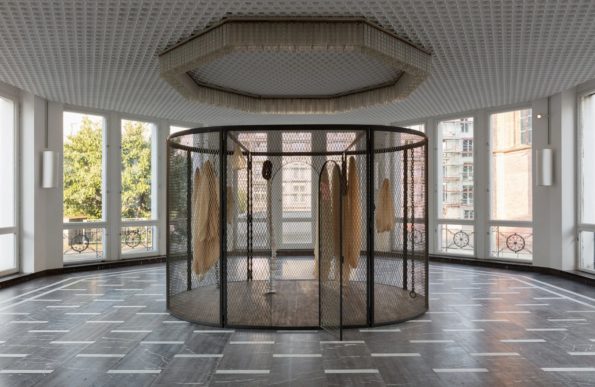Search
To search for an exact match, type the word or phrase you want in quotation marks.
A*DESK has been offering since 2002 contents about criticism and contemporary art. A*DESK has become consolidated thanks to all those who have believed in the project, all those who have followed us, debating, participating and collaborating. Many people have collaborated with A*DESK, and continue to do so. Their efforts, knowledge and belief in the project are what make it grow internationally. At A*DESK we have also generated work for over one hundred professionals in culture, from small collaborations with reviews and classes, to more prolonged and intense collaborations.
At A*DESK we believe in the need for free and universal access to culture and knowledge. We want to carry on being independent, remaining open to more ideas and opinions. If you believe in A*DESK, we need your backing to be able to continue. You can now participate in the project by supporting it. You can choose how much you want to contribute to the project.
You can decide how much you want to bring to the project.

Louise Bourgeois returns to Berlin with the installation The Empty House at the Schinkel Pavillon, her first solo exhibition after her death that presents the last two decades of work in a tone as intimate and emotional that could only materialise in this space.
The institution, run since 2002 by Nina Pohl – curator of the exhibition along with with Jerry Gorovoy – acts as an art centre that welcomes shows of experimental sculpture and contemporary installation art that often end up losing the battle with the space they occupy. This isn’t the case of Bourgeois’s fifteen pieces, which coexist in peaceful harmony with their surroundings, the non-renovated interior of the pavilion, producing a perfect combination of stark, empty rooms and the plastic metaphors that now inhabit them. This explains why an exhibition like this one couldn’t have been staged between the aseptic walls of the white cube, or in the endless spaces of museums and contemporary art centres we know so well.
The Empty House fills the unique spaces of the Schinkel Pavillon with sculptural and architectural elements that explore organic shapes and the possibilities of the complete and incomplete body. In the chosen works, Bourgeois expresses her vision of vital processes, of birth and death, presenting powerful images in response to primary emotional concepts that often surpass the issue of gender to delve into universal feelings such as fear or abandonment. This time, the images have a formal thread – the sack – that in one way or another resembles a house, a womb, a warm secure place that loses all meaning when it contains nothing.
Peaux des lapins, chiffons ferrailles á vendre (Rabbit Skins, Scrap Rags for Sale, 2006), the largest piece in the show, is a huge half-open cage whose door is also that of the entrance to the gallery, thereby offering viewers a false invitation to enter the cell. Inside, a wide range of objects of different textures alludes to empty sacks that yet seem to have previously been brimming with things. In all the works, the materials, shapes and colours remind us of organs, skin and even blood, as in the case of the red gouaches in the last room.

As visitors make their way through the show, the experience intensifies. The works unfold in three distinct spaces in which the size of the room, the artworks and the light vary. Thus, everything becomes progressively smaller, from the first to the last level, a space that acts as a disassembled kitchen made of tiles and facing concrete in which the atmosphere is as intimate as it is heartrending, oppressive almost. Yet in spite of their differences, the spaces share a common mood. The large showcases that house Bourgeois’s characteristic matter sculptures, which we often interpret as being self-referential, transform the vision of these personal, intimate objects into a sort of journey through a science or natural history museum. In this sense, even the first room – an octagonal space with glass walls that contains just one work, the cage – seems to anticipate the showcases yet to come.
Iconic elements from her artistic language, like the spider, which is integrated into the rest of the exhibition, intermingle under the same premise of presenting the Louise Bourgeois of recent years — intimist, delicate and psychological, yet with an overwhelming plastic and conceptual strength expressed as always, establishing an almost imperceptible difference between art and life.

Art Historian and MFA in Art, Literature and Culture Studies.
She lives in Madrid, where she works in documentation, criticism and cultural administration.
"A desk is a dangerous place from which to watch the world" (John Le Carré)